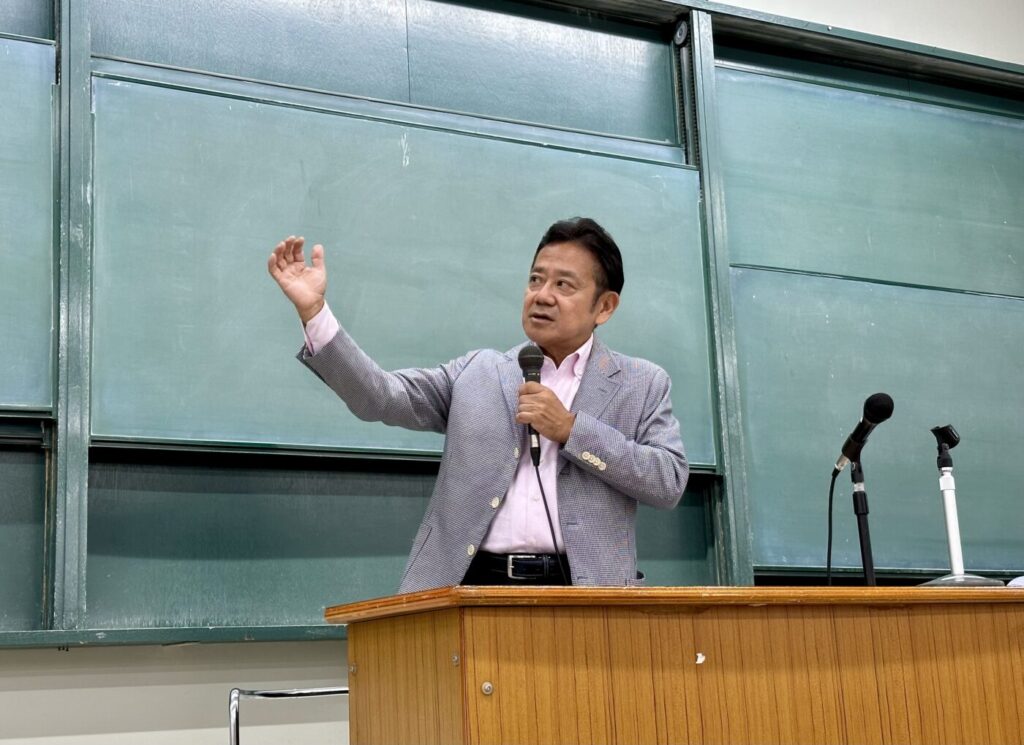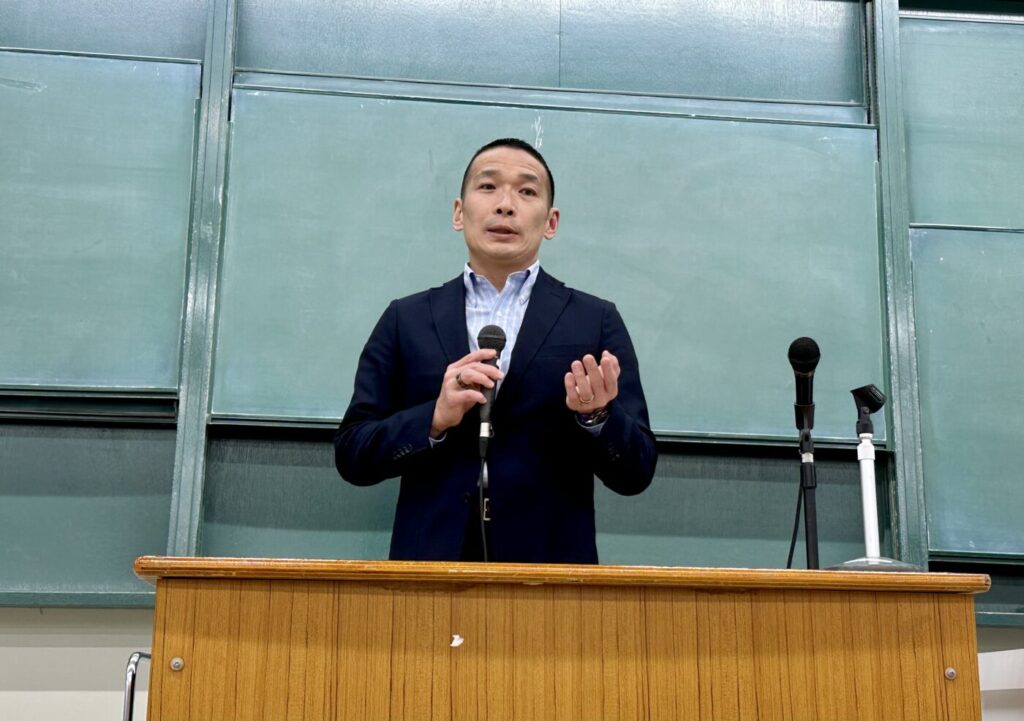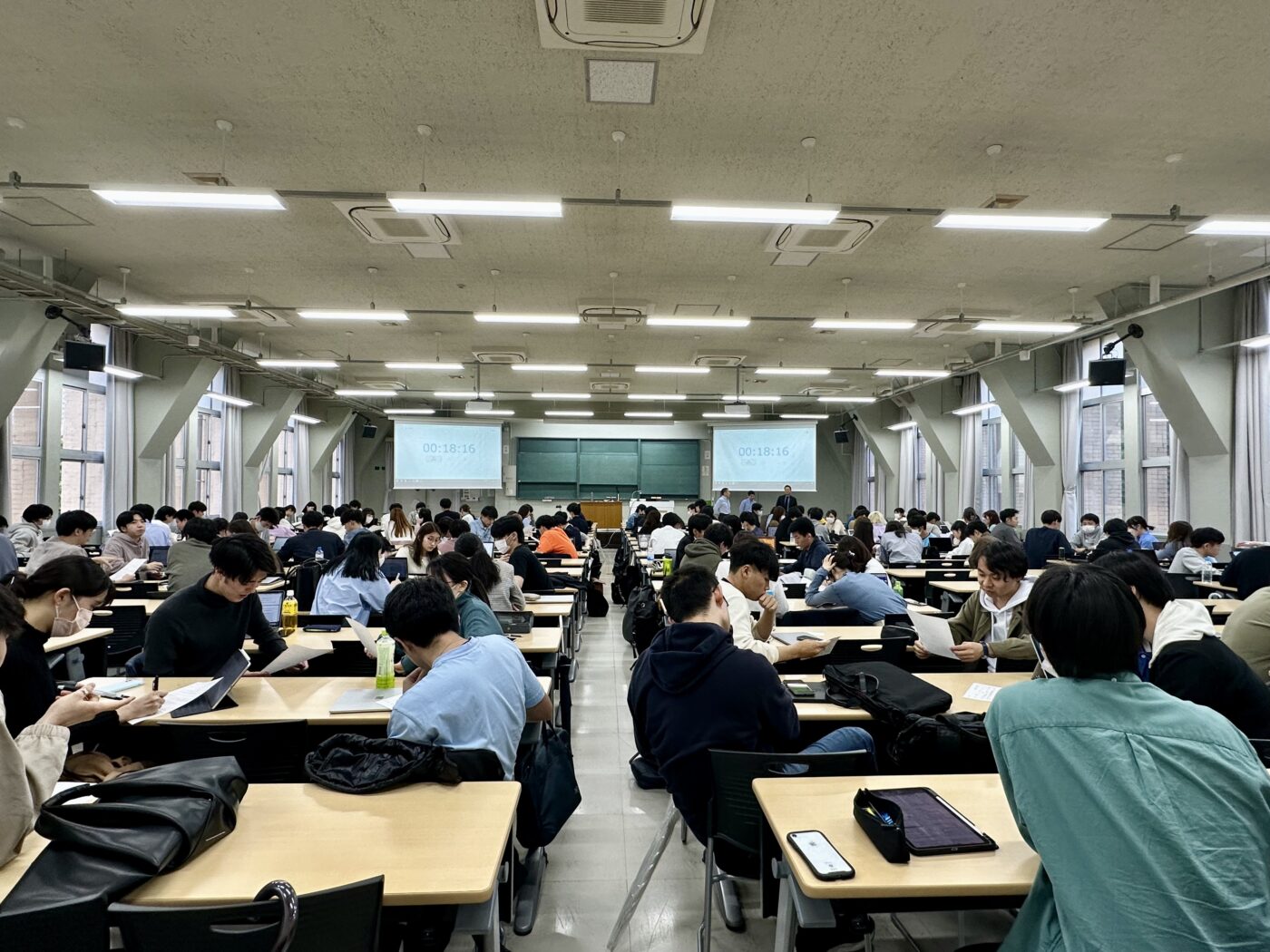Today’s lecture flow
▼Lecture: Professor Tamura – SPICE approach for decision making
▼Exercise: Professor Tamura and working TA Mr. Koyama – Group dialogues
Learning of the students – Extracts from the reflection sheets submitted after the lectures
● Third-year student in the Department of Law, Faculty of Law
The main focus of this class was the “SPICE rules,” and I learned from the S-P-C steps.
First, S / P is a series of steps, and is an approach that aims to identify all stakeholders involved in the issue as a precondition for solving the problem, and to think about the issue from the viewpoints of these various stakeholders.I was shocked by the idea of “reading the intentions of stakeholders who do not speak up,” which is required here.
In my daily life, when I encountered a problem or discovered an issue, I often asked myself how to solve it and put it into practice, so I was aware that “problem-solving is a process of seeking solutions by asking myself questions.”That approach alone may be sufficient to solve a problem or issue that only concerns me.However, the social issues I will face when I enter society in the future will naturally involve people in various positions other than myself as stakeholders, and they will have extremely diverse ideas about the issues, so the traditional “ask yourself” approach will not work at all.In solving such social issues, it will be possible to devise truly excellent solutions that will benefit all stakeholders by first deepening consideration through investigation and analysis of the circumstances of others in various positions before devising a solution.The awareness of “reading the intentions of stakeholders who do not speak up” (=P) is an extremely important way of thinking in that it allows us to constantly question whether our understanding of the situation covers all stakeholders without excess or deficiency (=S), and to use this as a stepping stone to fully solving the problem in the future.
Next, C is the step of brainstorming, which aims to present all possible solution options.
I could see a connection between the “Influence Diagram,” which was given as an example of this step, and the “Incentive Approach,” which I had studied earlier.The incentive approach is to consider the impact of one’s decisions on society and adopt the option that will have the most positive impact.The influence diagram, on the other hand, is based on the idea that one should consider all possible outcomes of an option and simulate all scenarios in order to generate a variety of solution options.I felt that there are similarities between the two in that “both consider the impact and effects of one’s actions and decisions later,” and that by learning the incentive approach, the influence diagram could also be practiced at a high level.
In addition, I could apply what I had learned previously in this class, and I was happy to feel that what I learned in this class had been put to good use.
The S, P, and C steps represent different stages of thinking in problem solving, but I think they all have one thing in common: their premise is to “think from the perspective of others.I would like to continue taking classes while being aware of “imagination for others.”
● Third-year student in the Department of Law, Faculty of Law
What was striking to me was the professor’s emphasis that simply stating one’s own opinion is almost meaningless in meetings and discussions.I learned that it is necessary first to identify all stakeholders involved in the issue, as well as those who are not speaking on the spot. I understand that SP is very important to grasp the premise and framework of the issue in the first place, as I tend to propose what I think will work well based on a theoretical framework.
We also learned that “diffusion” is important in discussions. I understood that it is important to be able to identify as many stakeholders as possible in a SP, and to be able to generate a variety of options from as many viewpoints as possible.Considering these facts, I felt that I could understand essentially what I have often heard, that it is important to have an environment where anyone can express his/her opinion regardless of his/her position in a meeting.
In the case study of the exercise, I expressed my opinion on behalf of my country.However, although I could identify the interested parties, I went to the meeting believing that I was representing my country, so I put my country’s will first in the discussion rather than a proposal that would satisfy each country.However, by identifying stakeholders and presenting opinions from various viewpoints, I was able to come up with effective opinions that strengthened my sense of conviction.I learned many things, but I would like to participate in future discussion, being especially conscious of the SP part that the professor emphasized.


 Twitter
Twitter Instagram
Instagram
